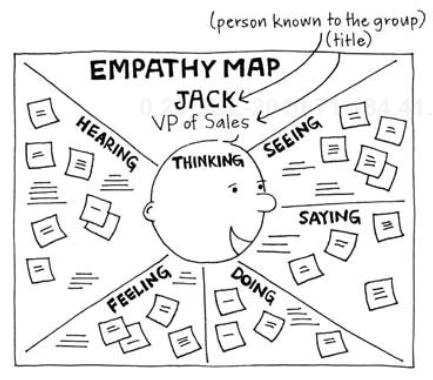Getting Comfortable with the “F” Word, Part I
As a marketer, it’s a magical moment when the perfect creative message starts to hatch. Your brainstorming team perks up, your business owner leans in, and the whole room suddenly feels connected, optimistic about the positive impact this will make on your advertising strategy.
But then reality sets in. Deadlines, project management and budgets all stand in between your idea and the customer you want it to reach. The truth is, the process of turning a great creative message into a real, live ad isn’t as glamourous as Don Draper makes it appear. The back-and-forth to bring any vision to fruition is enough to make even the most seasoned professional throw their hands up in despair. But bringing your advertising message to life doesn’t have to be complicated. It does, however, require you get comfortable with the “F” word –– feedback.
While there are many, many different options for sharing your brand’s message, the process is basically the same for each:
1. Come up with the idea
2. Pre-production
3. Produce it
4. Post-production
5. Launch
Identifying the critical feedback points along the way and understanding how to ensure what you intend to create is what actually gets produced are great ways to smooth out the sometimes choppy waters of ad development.
COME UP WITH THE IDEA
Coming up with the idea is arguably the best time to work feedback into your processes, as it’s the most cost-effective time to adjust your direction. There are two steps that are critical at this point to ensure smooth sailing for the process ahead – validating you’ve considered every angle, and garnering feedback to ensure your stakeholders agree.
One tool that’s great for considering every angle and how they might respond to your message is the Empathy Map, a brilliant idea from the book Gamestorming: A Playbook for Innovators, Rulebreakers and Changemakers. It’s an interactive way for a group of marketers to consider who their message will be touching (chiefly externally, but internally should be considered at some point as well) and think through these perspectives. Putting it together is simple – just ask “who is going to be impacted,” and get inside their head – what are they seeing, saying, doing, feeling and hearing?

Image from Gamestorming
Once you’ve gotten your maps together, get feedback from those who know the subject of your maps the best – often times it’s your sales team. Make it easy by printing over-sized versions of your maps and hang them in a shared space like a conference room or break room art-gallery style. Then, give the group providing feedback a stack of sticky notes. Ask them to go around the room at their leisure and critique each, adding sticky notes to fill in the holes you may not have considered. It’s a quick way to get their insights into how the creative message you have developed will resonate with your target audience.
PRE-PRODUCTION
Once you’ve validated your message will resonate, the most important next step is pre-production. This window can be very quick, depending on the creative you want to deliver, but represents another low-impact opportunity to gather feedback.
Pre-production is most often associated with film-making or video development, but translates to other forms of advertising as well. It starts when the planning begins and ends when the content starts being produced. Here, your feedback role shifts from gathering to providing. You’re steering the ship and must ensure those hired to create your message see your vision.
An obvious but sometimes overlooked way to provide your vision is using a Creative Brief or Campaign Planner. A quality production partner likely already has a solution like this and will provide it to you during this phase. If so, your role is to take the time to provide actionable and specific feedback to what they’ve developed in order to ensure good communication.
One way to simplify this is to ask for the Creative Brief in a Microsoft Word (.doc) format, and then use the “text highlighter” tool and “insert comments” to insert your feedback and spell out just what you’re looking for. After you spend the time carefully reviewing the Brief alone, set up a follow-up meeting with your developer and walk through your feedback, sometimes line-by-line. It seems like a tedious and time-consuming process, but it really does allow you to get on the same page before development effort is wasted.
This works for a lot of other aspects of pre-production a well, including script development or creating ad copy. They all require a bit of patience and willingness to invest your time for refinement.
So, you’ve charted your course, you’ve consulted with your crew, and you have an idea and a strategy that would wow the best of ‘em at Sterling Cooper & Partners. This must mean you’re ready to set sail and leave feedback behind, right? Not so fast. That ship you’re steering is pretty expensive, and it’s your responsibility to keep your advertising development on-time and within budget. Check back next week for part two of this series to see the importance of feedback through the remainder of your creative journey.
Connect with a Marketing Expert
Share Post On Social
Related Insights
Connect With Your Local Marketing Expert
You know your business. We know advertising. Together, we can bring your business to more people. Contact a member of our team today. We’d love to help you grow.

